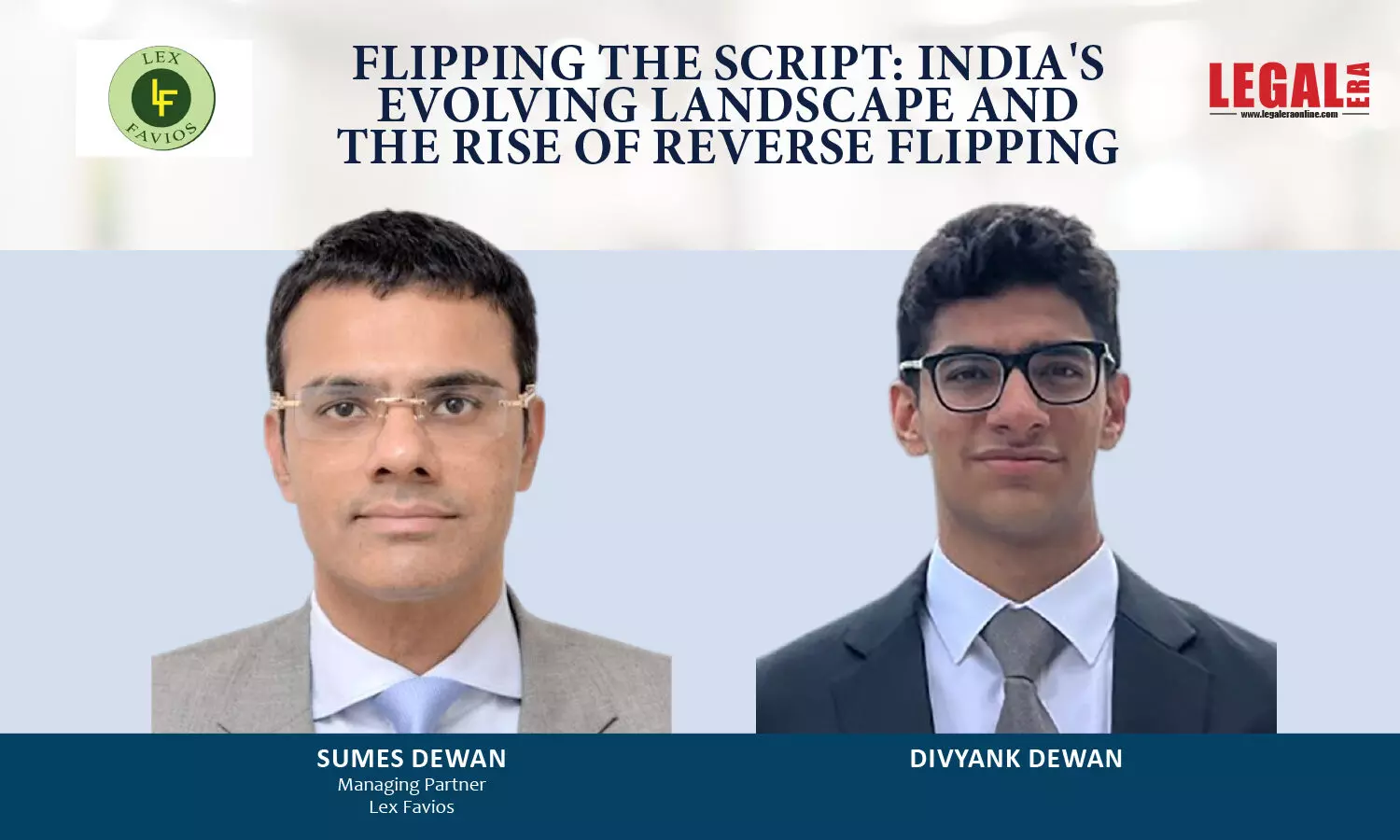- Home
- News
- Articles+
- Aerospace
- Artificial Intelligence
- Agriculture
- Alternate Dispute Resolution
- Arbitration & Mediation
- Banking and Finance
- Bankruptcy
- Book Review
- Bribery & Corruption
- Commercial Litigation
- Competition Law
- Conference Reports
- Consumer Products
- Contract
- Corporate Governance
- Corporate Law
- Covid-19
- Cryptocurrency
- Cybersecurity
- Data Protection
- Defence
- Digital Economy
- E-commerce
- Employment Law
- Energy and Natural Resources
- Entertainment and Sports Law
- Environmental Law
- Environmental, Social, and Governance
- Foreign Direct Investment
- Food and Beverage
- Gaming
- Health Care
- IBC Diaries
- In Focus
- Inclusion & Diversity
- Insurance Law
- Intellectual Property
- International Law
- IP & Tech Era
- Know the Law
- Labour Laws
- Law & Policy and Regulation
- Litigation
- Litigation Funding
- Manufacturing
- Mergers & Acquisitions
- NFTs
- Privacy
- Private Equity
- Project Finance
- Real Estate
- Risk and Compliance
- Student Corner
- Take On Board
- Tax
- Technology Media and Telecom
- Tributes
- Viewpoint
- Zoom In
- Law Firms
- In-House
- Rankings
- E-Magazine
- Legal Era TV
- Events
- Middle East
- Africa
- News
- Articles
- Aerospace
- Artificial Intelligence
- Agriculture
- Alternate Dispute Resolution
- Arbitration & Mediation
- Banking and Finance
- Bankruptcy
- Book Review
- Bribery & Corruption
- Commercial Litigation
- Competition Law
- Conference Reports
- Consumer Products
- Contract
- Corporate Governance
- Corporate Law
- Covid-19
- Cryptocurrency
- Cybersecurity
- Data Protection
- Defence
- Digital Economy
- E-commerce
- Employment Law
- Energy and Natural Resources
- Entertainment and Sports Law
- Environmental Law
- Environmental, Social, and Governance
- Foreign Direct Investment
- Food and Beverage
- Gaming
- Health Care
- IBC Diaries
- In Focus
- Inclusion & Diversity
- Insurance Law
- Intellectual Property
- International Law
- IP & Tech Era
- Know the Law
- Labour Laws
- Law & Policy and Regulation
- Litigation
- Litigation Funding
- Manufacturing
- Mergers & Acquisitions
- NFTs
- Privacy
- Private Equity
- Project Finance
- Real Estate
- Risk and Compliance
- Student Corner
- Take On Board
- Tax
- Technology Media and Telecom
- Tributes
- Viewpoint
- Zoom In
- Law Firms
- In-House
- Rankings
- E-Magazine
- Legal Era TV
- Events
- Middle East
- Africa

Flipping The Script: India's Evolving Landscape And The Rise Of Reverse Flipping
Flipping The Script: India's Evolving Landscape And The Rise Of Reverse Flipping

Flipping The Script: India's Evolving Landscape And The Rise Of Reverse Flipping The liberalization of overseas investment rules by the reserve Bank Of India (RBI) under the 2022 framework marks a significant shift in india's regulatory approach to round-tripping, a practice long associated with tax evasion and money laundering Flipping involves transferring ownership of an Indian company to...
To Read the Full Story, Subscribe to Legal Era News
Access Exclusive Legal Era Stories, Editorial Insights, and Expert Opinion.
Already a subscriber? Sign in Now
Flipping The Script: India's Evolving Landscape And The Rise Of Reverse Flipping
The liberalization of overseas investment rules by the reserve Bank Of India (RBI) under the 2022 framework marks a significant shift in india's regulatory approach to round-tripping, a practice long associated with tax evasion and money laundering
Flipping involves transferring ownership of an Indian company to a foreign entity, to access global investors, favourable tax regimes, and foreign stock exchanges. Conversely, reverse flipping is the process of relocating a company’s headquarters back to India, driven by India’s maturing markets, robust IPO opportunities, and regulatory changes with initiatives such as ease of doing business in India. Rule 25A(5) of the Companies (Compromises, Arrangements and Amalgamations) Rules, 2016, has streamlined reverse flipping by simplifying compliance for mergers between foreign and Indian entities. This trend has gained traction among startups like PhonePe, Groww, and Pine Labs. For instance, PhonePe’s reverse flip from Singapore to India in 2023 involved a share swap and incurred `8,000 crore in capital gains taxes. Flip structures may be created by creation of a foreign holding company, by share swaps or by cross-border mergers as governed by Section 234 of the Companies Act, 2013.
In Flipkart’s 2011 flip, the company shifted its holding structure to Singapore to bypass India’s restrictions on FDI in the e-commerce sector. The Singapore-based entity, Flipkart Pvt Ltd, became the parent company, whilst Indian operations were structured as subsidiaries. Subsequently, funds were infused into the Indian subsidiary from the Singapore parent as foreign investment. This arrangement effectively routed Indian-origin capital through a foreign entity back into India, a classic example of round-tripping, where domestic money re-enters the country disguised as Foreign Direct Investment.

2022 Overseas Investment Rules introduced a significant liberalization by permitting round-tripping, without requiring specific approval under Rule 19(3). Foreign Exchange Management (Overseas Investment) Rules, 2022 read with the Foreign Exchange Management (Overseas Investment) Regulations, 2022 (collectively, the “OI Framework”), prescribes that a person resident in India is not permitted to invest in a foreign entity that has invested or invests into India, through a structure with more than two ‘layers’ of subsidiaries (“OI Layering Rules”).
Indian companies were required to report to the Registrar of Companies (“ROC”), their multi-layered holding structures within 150 days of notification of the Companies Layering Rules. Accordingly, the structures existing at the time of notification of the Companies Layering Rules were ‘grandfathered’ (“Reported Structures”) and the Companies Layering Rules should not be interpreted to apply retrospectively. On a plain reading of the OI Layering Rules (reproduced below), it appears that the layers of subsidiaries referred thereunder are not linked to a particular entity.
“No person resident in India shall make financial commitment in a foreign entity that has invested or invests into India, at the time of making such financial commitment or at any time thereafter, either directly or indirectly, resulting in a structure with more than two layers of subsidiaries”
It is unclear from the above as to whether the ‘two layer’ restriction would apply only to offshore entities, or even to layers below the Indian entity, which receives the circuitous foreign investment through the overseas structure.
The prevalent market view in this regard appears to be that the restriction does not extend to (and thereby, does not take into account) subsidiaries of the Indian entity in which, the offshore circuitous investment loop ends. However, an express clarification from the RBI to this effect would provide much needed clarity to the interpretation of this provision.
Round tripping was sought to be regulated by the RBI under Regulation 6(2)(ii) of FEMA which allowed direct investment in overseas wholly-owned subsidiary (“WOS”) or joint-venture (“JV”) (both as defined under the regulations) engaged in a ‘bonafide’ business activity. Although the term ‘bonafide’ activity was not defined, the RBI took a view that receipt of FDI pursuant to or in connection with an ODI transaction was not a bonafide activity under the automatic investment route.
While the regulation ostensibly seeks to promote ease of doing business, the prohibition of multi-layered structures introduces significant challenges
The government’s decision to impose an absolute restriction on corporate structures exceeding two layers raises critical concerns regarding its viability. While the regulation ostensibly seeks to promote ease of doing business, the prohibition of multi-layered structures introduces significant challenges. It restricts structural flexibility, particularly for complex global operations, thereby potentially hindering integration and expansion within India, an area of strategic focus for the government at present. Nonetheless, it is undeniable that multi-layered corporate structures have historically been exploited for financial malpractices such as fund diversion and money laundering, underscoring the regulatory intent behind this measure. However, limiting the number of layers alone cannot effectively address these concerns. For example, an Indian startup could relocate its base to Australia, secure foreign direct investment from its original promoters through layered entities in Mauritius and then reinvest back into India. Such scenarios vitiate the very purpose of the cap on investments up to two layers since some jurisdictions such as Mauritius allow multiple subsidiary layers, thereby undermining the regulation’s intent.
Conclusion
The liberalization of overseas investment rules by the Reserve Bank of India (RBI) under the 2022 framework marks a significant shift in India’s regulatory approach to round-tripping, a practice long associated with tax evasion and money laundering. While the OI Framework aims to provide clarity and flexibility, they also impose restrictions to prevent abuse of such structures. The Binani Cement case highlights the complexities of cross-border financial structures and underscores the RBI’s role in maintaining regulatory oversight to ensure compliance with both domestic and international norms.
However, ambiguities remain, particularly around the calculation of subsidiary layers and expanded definitions under the new regime. These uncertainties could potentially lead to interpretational challenges, requiring further clarifications from regulators. Moreover, as highlighted above there lies a need to allow for round tripping with more than two subsidiary layers.
Disclaimer – The views expressed in this article are the personal views of the authors and are purely informative in nature.


